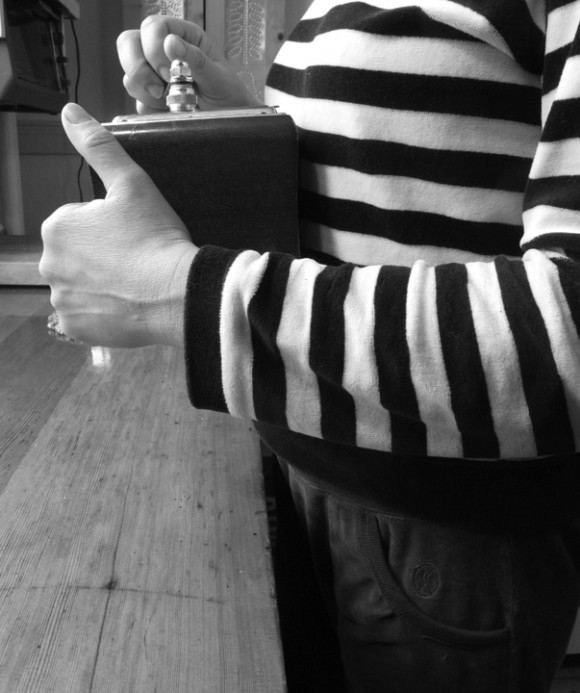Day 1 on four dollars of food per day

Woke up and wondered how many grams of coffee I consume in one cup. I got out my partner’s baking scale: about 24 grams. If five pounds of fair trade, freshly roasted Colombian coffee costs $46 (via a network of friends, roasters and producers), that means each cup, not counting water and electricity and the infrastructure of our kitchen, costs about 48 cents.
That’s more than 10 percent of my food allowance for today. But, let’s say I’m addicted to coffee (I’m in denial about that) and need it. So, I put the water on and start hand-grinding the beans.
This is my first day of a new “diet.” As I mentioned in my last post, I’m going to try and live off of $4 worth of food per person per day, for just under a week (6 days).
At the end of the week I’ll join a small panel of others who did a similar thing, and talk about our experiences, urban hunger and global distribution of food.
The event is announced on the Canadian Foodgrains Bank website here.
We’ll meet at the downtown public library on Sunday October 16, 1:30 to 4:30 p.m. I encourage any Geez readers, and others, of course, to come down and bring the toughest questions you have.
As I start, I’ve got a few questions.
How to count staples?
First, if I’m counting $4 of food per day, how do count fresh veggies. For example, we have lots of squash, carrots and beets from the garden we share with the family farm. I’m assuming I shouldn’t eat them — because low-income and hungry folks don’t have gardens. But that’s a quick and easy stereotype. I wonder if it’s true.
And if I do count the tomatoes and apples, etc. that we have from the land, do we set grocery-store dollar figures on them? I’ll figure out a system.
Need more info
Second, I’d like more information on the figure of spending $4 on food per day? Who gets that amount; how do they get by, what else to they spend money on, etc.? I’m looking into this.
Just charity or seeds of structural change?
Third, I’d like to know what the organizers hope to achieve with this event. De we simply want to raise awareness and get more people to give money and time to food justice groups and charities, such as the sponsors of the event, Oxfam, Winnipeg Harvest, or Canadian Foodgrains Bank?
This would help a few folks in the immediate future, but what about deeper change? I wonder what the plans are for that. An action like this could raise the public’s awareness and make them more receptive to structural change (like some of the proposals put forth by folks at Occupy Wall Street, see first list of demands here ).
How do rich help the poor, can they?
Fourth, I’m wondering how this event will differ from the one a week or two ago were CEOs slept on the street to bring attention to homelessness in Winnipeg?
As I think about that event now, it’s kind of corny: rich and powerful people pose as those in solidarity with those most desperate among us. Aren’t the rich and powerful the ones that erect and sustain an oppressive system (e.g., keep wages low, outsource jobs, use machines when people sit idle, seek profit and tax loopholes/benefits before justice and broader distribution of wealth)?
I’m suspicioius of top-down change. Which means as long as I identify with and benefit from the spoils of the upper classes, I don’t think I’ll have the answers to the questions of hunger, homelessness, poverty and other forms of discrimination and oppression. “Meaningful solidarity” and a listening posture is all I can hope for at this point.
I want to be part of an action that doesn’t just share surplus food from the middle and upper classes; I want to be part of a society where no one is hungry. How does this my eating $4 worth of food per day fit with that goal?
Have ideas or comments? Let me know.
Aiden Enns,
Editor, Geez magazine


Sorry, comments are closed.